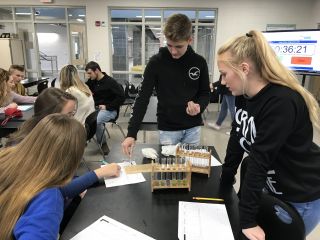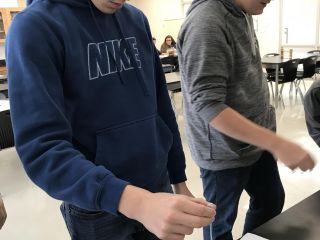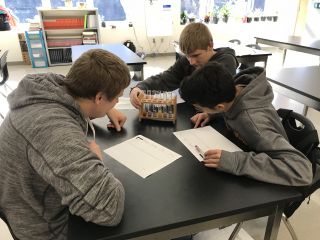Cortney Flannery-Kidd
Snapshot
Think About It, Then Talk About It: Content-Driven Inquiry Leading to CER Strategies in Science
This grant has been designed around multiple investigations in which students will focus on core concepts of Cell Biology. First, they will discover patterns of diffusion, which results from the random movement of molecules and other small particles. Diffusion is essential to the life of a cell. Many nutrients enter a cell by diffusion, and the same process discharges waste products. Diffusion occurs rapidly over short distances but more slowly over longer distances. In this STEM activity, students will use agar cell models to observe the results of diffusion over a period of 10 min. Students then reinforce the results by using calculations to explore the relationship between diffusion rates and cell size and the importance of the ratio of a cell’s surface area to its volume. As a result, students will be able to write a formal claim and use their evidence from the lab to justify their responses.
As a second tier to Students will also use dialysis tubing and numerous solutions to examine and explain the semipermeable nature of a cell membrane. It will be an open inquiry as far as design goes and will allow them to determine their own experimental design. In return, they will write a claim about the movement of iodine and starch particles across a semipermeable (dialysis tubing) membrane. Finally, I have designed activities that will allow students to use our class set of microscopes. They will work to predict and generate claims about patterns and common trends in cellular division (microscope lab). They will also get to analyze differences in types of cells using the bacterial cell types slides.
Valuing Pro Beware and Energy in Biology
In this particular proposal, I plan to purchase materials, lab, and probeware basics, for students to complete an investigation and analysis on the major biological concept of cellular nutrition and energy obtainment.
In the investigation, students will understand that fundamental life processes of plants and animals depend on a variety of chemical reactions that occur in specialized areas of the organism’s cells. The class will learn how food supplies energy for all animals—without it we could not live. The quantity of energy stored in food is of great interest to humans. The energy our body needs for running, talking, and thinking comes from the foods we eat. Not all foods contain the same amount of energy, nor are all foods equally nutritious for us. Students can determine the energy content of food by burning a portion of it and capturing the heat released to a known amount of water. This technique is called calorimetry. The lab equipment, temperature probes, and Vernier interfaces will be used in this procedure in order to examine and determine the nutritional value of various sources.
In a second component of energy study, student focus will turn to how individual cells get and maintain energy. Students will use the floating leaf disk method to study the effects of light intensity and CO2 availability on the rate of photosynthesis. I will supply fresh, green leaves for the activity. Students will use syringes to create vacuums and will be able to monitor gas production as a by-product. Students will need the indoor tabletop grow light, but will also have direct window access to add to the inquiry element of light type influencing the amount of energy generated.
Download Presentation Powerpoint Download Presentation Powerpoint






